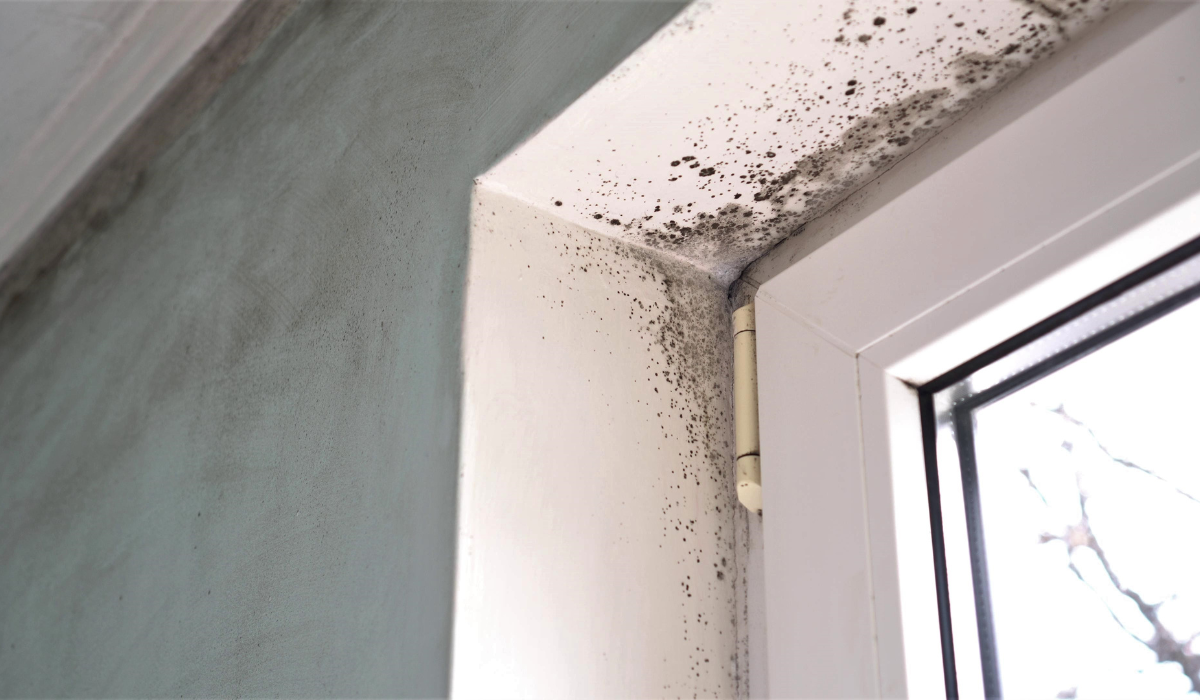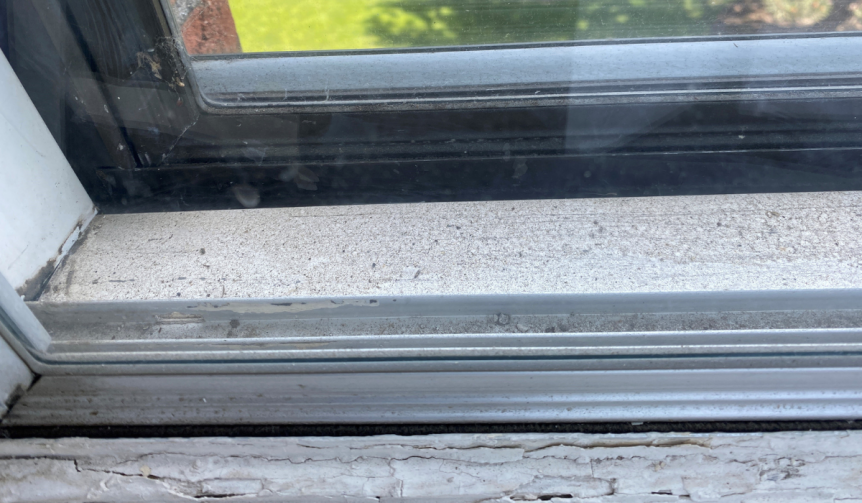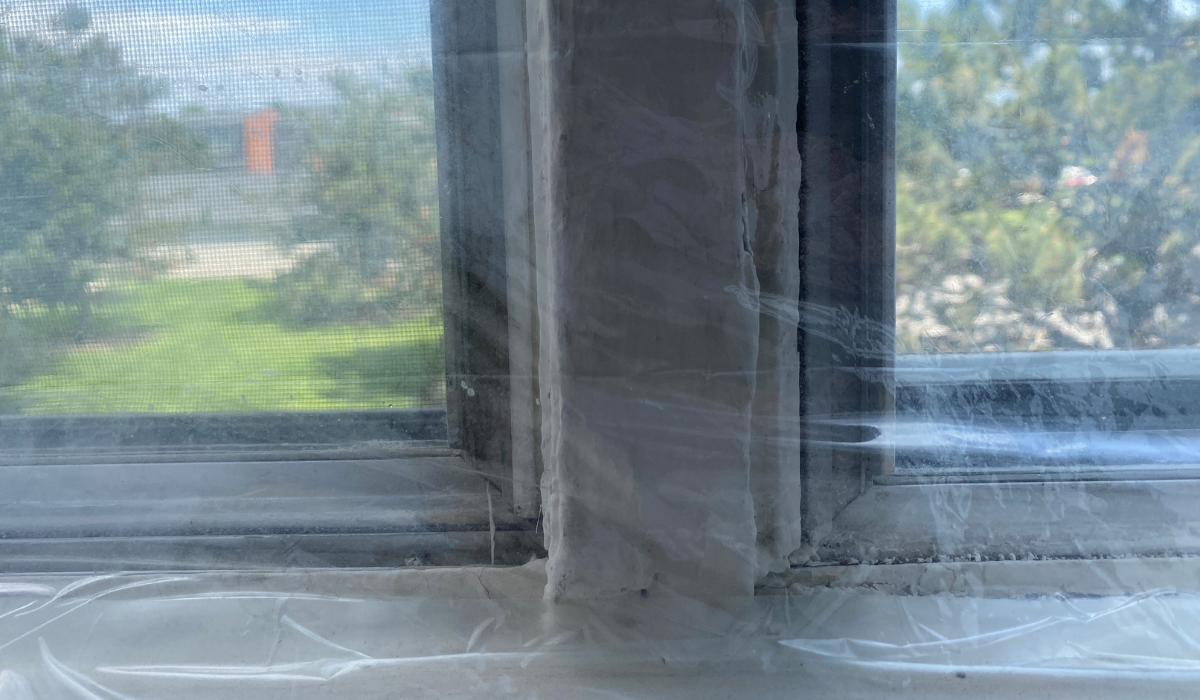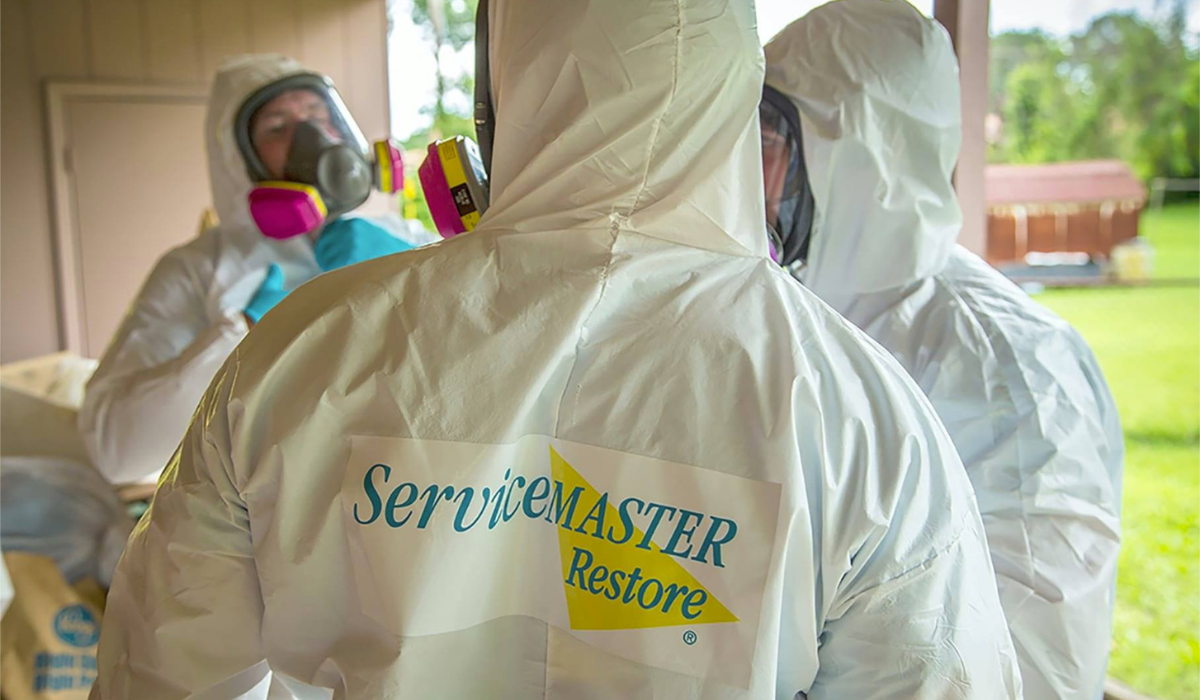Windowsills covered in splotches of green mold should be dealt with swiftly. Green mold, and mold in general, is hazardous to health as well as damage to building structures. Here’s how a homeowner can approach the DIY task of removing small growths of pesky green mold from windowsills.
What is green mold?
Green mold is any species of mold that grows with a greenish hue. The green spores can resemble patches of fuzz or appear powdery. A range of mold species can develop greenish tints. The three most common green molds are Cladosporium, Aspergillus and Penicillium.
Cladosporium thrives on plant life, but its spores can latch onto household surfaces as well, including walls, cabinets, and carpets. Aspergillus can be found growing on spoiled food, like days’ old bread, and in basements. Penicillium grows in cold or damp areas of a home.
While Cladosporium appears olive-green in color, and Penicillium shows up as bluish-green, these molds can grow in multiple other colors, too. It is not unusual for these aforementioned species to form blue or black coloring. In general, green mold appears as different shades of green.

Why does green mold grow on window Sill?
Green mold, like any other mold, requires three basic nutrients to survive: moisture, organic materials, and darkness. When an environment is rich with these foods, mold colonies flourish. Windowsills, specifically, provide an ample amount of all three forms of nourishment.
Windowsills typically consist of wood and may be scattered with dirt, both of which offer mold spores a banquet of organic materials upon which to feast. Water can collect on the windowsills, providing mold with a constant supply of moisture. Corners of windowsills are usually dark.
Homeowners are unlikely to see the mold growing on the windowsills right away. The spores first latch onto the bottom of the window at the joint between the glass and frame. If the mold’s coloring happens to match the windowsill, the growth will be hard to detect visually.
Upon suspecting green mold, testing should be performed. The most efficient approach to mold cleanup may be influenced by whether or not it is mold or mildew growing on the sills. Mold testing kits are available from hardware stores. Professional mold removal services also produce accurate test results.
How is green mold removed from window Sill?
Once the green mold growth has been confirmed through mold testing, the most important step in mold removal is to repair the water source. In the case of windowsills, cracks or other flaws at the base of the wooden frame may require a sealant to keep out intruding moisture.
Prior to beginning the actual mold cleanup, the homeowner is advised to wear protective gear to prevent inhaling the spores: a dust mask, safety goggles, and gloves. Lay a cloth on the floor under the window to catch falling mold spores and prevent them from contaminating other areas.
Introduce extra ventilation into the area by opening a window or door, which gives airborne mold spores an opportunity to escape, rather than remain inside the home. Spray the affected areas with water (this step ensures the spores do not spread during cleanup). Dry with a disposable cloth.
Wiping the dampened windowsill with the cloth removes excess mold. Additional mold spores will remain latched onto the porous material of the wooden window frame, and these need to be cleaned up via a deep clean. White vinegar and water will be required for this next step.
Spray a generous amount of undiluted white vinegar onto the moldy sills. Allow the vinegar to sit for one hour. Use a disposable cloth and warm water to wipe the area clean. Spritz the newly cleaned area with vinegar again and let it air dry to fully kill the mold.
Stubborn mold infestations can be cleaned with baking soda, a natural abrasive. Combine two cups of water with two teaspoons of baking soda in a spray bottle and shake. Spray the solution onto the mold and scrub with a scouring pad or brush. Wipe with a cloth and warm water.
What prevents green mold growth on window sill?
Moisture is the number one contributor to green mold growth on windowsills. Remove the moisture source, and the mold problem will be fixed. Keep the windowsills dry by wiping away condensation regularly with a dry cloth. Open the windows when weather permits to increase ventilation.
Minor instances of green mold on windowsills can be successfully removed via a DIY project. Larger mold infestations, however, require professional services from ServiceMaster DRR. Our crews of experienced technicians will locate and eliminate all traces of mold growth from your property.
Mold growth can be an outcome of fire damage since firefighters use hoses to force large streams of water inside the home to extinguish the flames. At ServiceMaster DRR, we possess the equipment and techniques to restore not only a fire damaged home, but a mold damaged one, too.
After the flames have been extinguished, it’s important to act fast. Water damaged areas can develop mold issues rapidly, often within 24 to 48 hours. Our restoration crews are available to respond to emergency calls and proactively prevent further ruin to your home or business.
ServiceMaster DRR fire damage restoration specialists are licensed and insured. We approach each disaster with skill, first assessing the extent of damage and then preparing a restoration plan to return the damaged property to its pre-loss condition as quickly and efficiently as possible.
Mold and fire damage should be handled immediately by our experts. Delays in addressing the issues can result in the further spread of damage. By working with our experienced crews, property owners avoid even costlier repairs. We’ll determine the best course of action to restore the property.
Residential homeowners and commercial property owners in San Francisco, California, and the surrounding Bay Area, depend on ServiceMaster DRR for speedy and reliable mold removal and fire damage restoration. Call us any day of the year for prompt, professional restoration services.

Steve VanDenBerg is the owner of ServiceMaster Disaster Restoration and Recovery. He has over 30 years of experience working within the restoration industry and successfully leading start-ups, turnarounds, acquisitions and mergers, and rapidly growing companies.
Steve earned his BS in Business & Accounting from Calvin University in Grand Rapids, MI and began working for DSI Holdings as their Chief Financial Officer. When Steve began with DSI Holdings, they were running an underperforming ServiceMaster Restore franchise with one location. Steve implemented new policies and procedures for accounting and finance as well as a professional sales plan that increased profits eightfold over his time as the CFO. He was then promoted to President and CEO and in this time, he expanded the company from two locations with $4M in sales to 12 locations and $45M in sales. DSI Holdings became one of the largest disaster restoration companies in the U.S. and helped with major restoration projects throughout the U.S. and around the world.
Steve purchased ServiceMaster DRR in 2015 when the business was in decline. Drawing on his years of experience in turning around struggling ServiceMaster franchises, Steve overhauled our operations, including finance, sales, and marketing, which led to a quick turnaround. Within Steve’s first 24 months, sales increased by 60 percent. Steve also helped greatly improve our operating margins and established a relationship with California’s largest residential insurance company. Under Steve’s leadership, we have become one of the largest disaster restoration providers in California.
Steve has found great success in turning around struggling and stagnant restoration franchises by changing the business model and strategy, greatly increasing sales and profits. Many of the changes he has implemented have even been adopted by the franchisor into their operating model.





